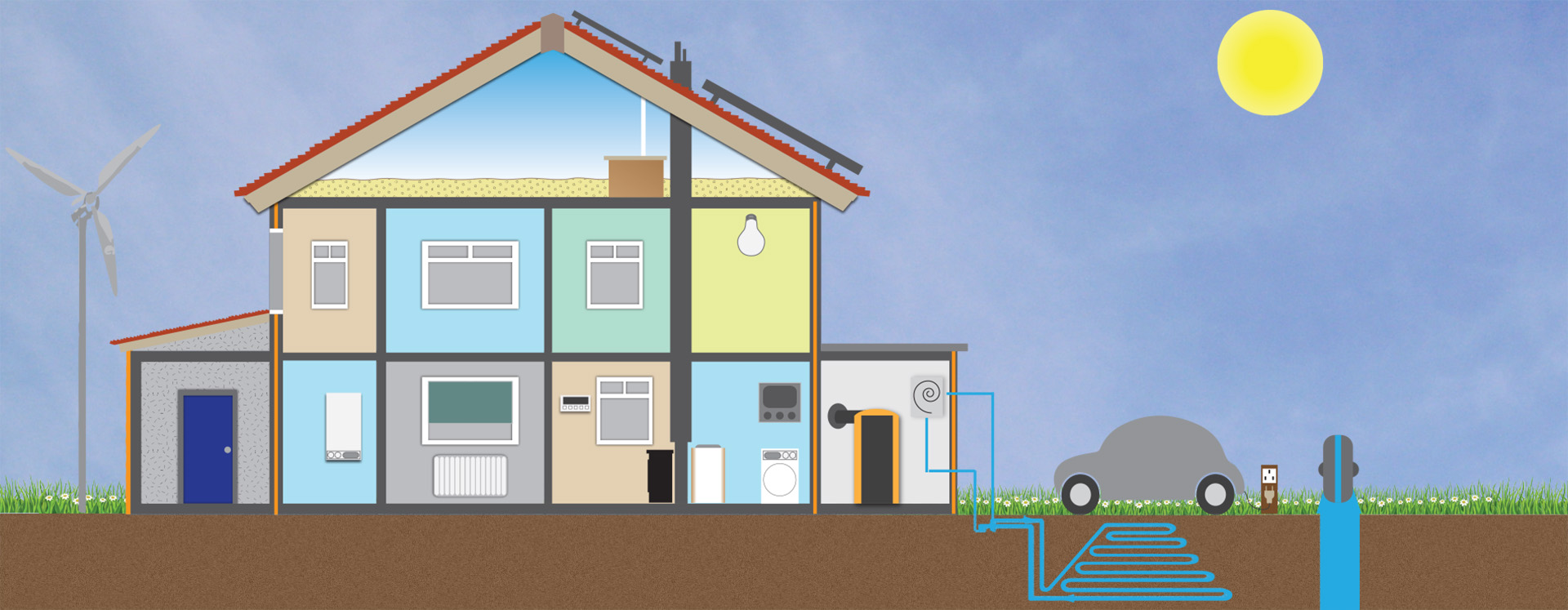It is estimated that approximately 10% of a home’s heat is lost through its windows, but energy-efficient glazing will help to keep your home warmer and quieter as well as reducing your energy bills. The Energy Saving Trust estimates that if all single glazed windows are replaced in a house with B-rated double glazing, a saving of around £170 per year would be made on energy bills.
Other advantages of installing energy efficient windows:
- reduce draughts in the house
- reduce outside noise
- reduce condensation on windows
How does energy-efficient glazing work?
Energy efficient windows are made up of two or three sheets of glass with a gap between them, usually about 16mm. This gap creates an insulating barrier that retains heat in your house. The gap is sometimes filled with an inert gas. Should the seal between the gap break down you may see condensation between the panes of glass, at which point the glass will need repairing or replacing. Energy efficient windows should last 20+ years.
What frame materials are available?
There are a range of materials available to suit your house, preference and budget. It is important to note that for whatever frame material is being used, there are windows available in all energy ratings.
uPVC frames last a long time and can be recycled.
Wooden frames can have a lower environmental impact, and if adequately maintained, can last at least as long as uPVC. If you live in a listed building or conservation area where the original windows were timber framed you may be required to replace with wooden framed energy efficient windows.
Aluminium frames are slim and long-lasting, and can be recycled. Composite frames have an inner timber frame covered with aluminium or plastic. Composite frames require less maintenance than wooden frames.
What are the energy ratings for energy efficient windows?
As well as the aesthetics, it is important to consider the energy rating of your replacement windows when making a decision. Many window manufacturers show the energy efficiency of their products using an energy rating scheme from A (best) to G (worst), much like you find on white goods appliances these days. The higher the rating the greater the potential energy-saving.
Is there anything else I should consider?
Conservation areas / listed buildings – if you live in a conservation area or listed building there may be restrictions on what you can do to your windows. It is important to check with the local authority before you make any changes.
Ventilation - replacement windows are likely to be more airtight than your original frames, so condensation may build up elsewhere in your house due to the reduced ventilation. If you do not have sufficient other sources of ventilation, trickle vents can be incorporated into your new windows.
Are there any other options to window replacement?
There are a number of options available that will help you reduce heat loss though your windows without the need for replacement. These include: the use of heavy, lined curtains, fitting shutters or fitting secondary glazing. Secondary glazing is where a secondary pane of glass and frame is fitted inside the existing window reveal. This won’t be as well sealed as a double-glazing unit, but will be much cheaper to fit.

